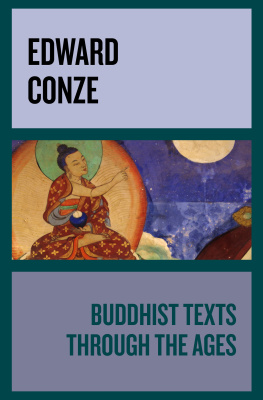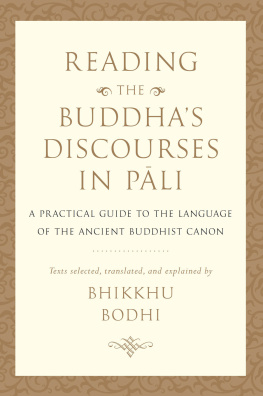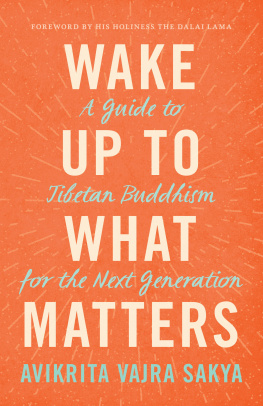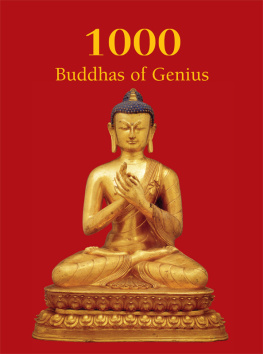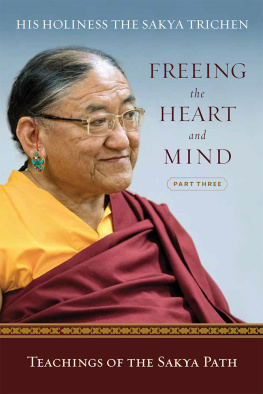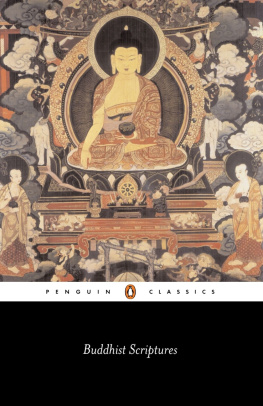SAKYA
OR BUDDHIST ORIGINS
By
MRS RHYS DAVIDS
D.Litt., M.A., President of the Pali Text Society, Lecturer on
Pali and Buddhism at the School of Oriental Languages,
London, author of The Milinda Questions, etc., etc.
All the worth in my figure of the Way is based on
this : that man is not, but is becoming. The Wayfaring
is nothing if it be not an advance. Mans life is nothing
worth if he stay where he is. Gotama the Man.
First published in 1931 by Kegan Paul, Trench, Trubner & Co., Ltd
This edition first published in 2018 by Routledge
2 Park Square, Milton Park, Abingdon, Oxon, OX14 4RN and by Routledge
711 Third Avenue, New York, NY 10017
Routledge is an imprint of the Taylor & Francis Group, an informa business
1931 Taylor & Francis.
All rights reserved. No part of this book may be reprinted or reproduced or utilised in any form or by any electronic, mechanical, or other means, now known or hereafter invented, including photocopying and recording, or in any information storage or retrieval system, without permission in writing from the publishers.
Publishers Note
The publisher has gone to great lengths to ensure the quality of this reprint but points out that some imperfections in the original copies may be apparent.
Disclaimer
The publisher has made every effort to trace copyright holders and welcomes correspondence from those they have been unable to contact.
A Library of Congress record exists under ISBN: 31023690
ISBN 13: 978-1-138-55369-9 (hbk)
ISBN 13: 978-1-315-12305-9 (ebk)
SAKYA
OR BUDDHIST ORIGINS
SAKYA
OR BUDDHIST ORIGINS
BY
MRS RHYS DAVIDS
D.Litt., M.A., President of the Pali Text Society, Lecturer on
Pali and Buddhism at the School of Oriental Languages, London,
author of The Milinda Questions, etc., etc.
All the worth in my figure of the Way is based on
this : that man is not, but is becoming. The Wayfaring
is nothing if it be not an advance. Mans life is nothing
worth if he stay where he is. Gotama the Man.
PRINTED IN GREAT BRITAIN BY STEPHEN AUSTIN AND SONS, LTD., HERTFORD.
This book is intended to be a help to those who would approach the study of a great religion with a very long history in the intensive way known as at first hand. As such it is not a supplement, but a complement to my other manual, Gotama the Man. In that work I sought to help the otherwise busy man and woman who have too little leisure or inclination to take up the history of that religion seriously, the study of its records, the study of their language. It is to those who have the inclination and are carving out the leisure to consider that history more closely and, it may be, to further what is known of it that I turn here and now. And to such I would at the outset say this :
You have the will to take up the study of what is called Buddhism, and more especially, just now at least, the study of the Buddhism to be got from what is known as Pali literature. You, in taking up this book, are asking to be told something about the beginnings of the one and the other : what was Buddhism at first i how did it come to be what it now is ? is it very like what at first it was ?
To your first question I would say : Put away, for your origins, the word Buddhism and think of your subject as Sakya . This will at once place you for perspective at a truer point. You are taken away from a quite modern termconvenient, it is true, for inclusive importand are deposited in the history of the first three or more centuries of the life of this religion. Emphasis for you shifts at once. You are now concerned to learn less about Buddha and Buddhism , more about him whom India has ever known as Sakya-muni, and about his men who, as their records admit, were spoken of as the Sakya-sons, or men of the Sakyas. It is only when Sakya was lingering on in India as a moribund cult, as a decadent quasi-philosophy, that Indian writers mentioned it as what the Bauddhas say .
In the next place, you will have been directed, for the carrying out your purpose, for the finding replies to your questions, to devote possibly your first inquiries to a study of the collection of booksall, as books and not as manuscripts only, made accessible to you in this last half-century by the labours of a handful of scholars and by the gifts of a handful of donorsthe collection entitled the Pali Canon of the Three Pitakas. Of these three, the first two, containing respectively a mass of monastic rules and comments thereon (with a few scraps of narrative), and an immense number of recorded sayings in verse and prose (with a book of commentary and one of folklore) are earlier than the third. This is internally admitted and is demonstrable. You will further be referred to two or three extra-Canonical books and to a number of commentaries on the Canonical books. For these last a much later fixed wording, and writing down in such, is claimed, although as spoken comment they may be as old as much in the canon itself.
Hence for a reply to your first question you will mainly concentrate on the first two Pi takas, the while you keep a watchful eye on the Commentaries. If herein you are first directed to the scraps of narrative in the second Pi taka and to a few more adduced in the first Pitaka (mainly to vindicate the main sanctions of a community of the Rule and the making of some particular rule), you will probably not, at this time of day, be first struck, as I was half a century ago, by this : that the appearance of a devoted Helper of Man, with an inspired mandate, becomes no longer for you a phenomenon that is unique. Your day is different ; it has learnt more. For you comes possibly a different first impression ; one that belongs more to your second and third question. You may, as a child of your day, get the impression that what you read in the records is other than what a World-Helper will have said to the worldthat is, to the men and women about him there and then. If not, what will he really have said there and then, and how will he have said it there and then ?
If this comes over you, you are at the right standpoint to take up the historical study, the one and only right study, of Buddhism . And if this be not your impression, it is what I seek to give you in this book. What he, called Buddha , is made to say; what it is likely he will have willed to say ; what it is unlikely he will have willed to say ; what it is impossible he can ever have said and yet is made to say : here is sound outlook ; here is the attitude of the man or woman bent on a quest of high worth. Your quest is one of high worth. It concerns so much more, in your own growth, than the eliciting truth from a dead past. It is a quest in what is true in your own nature, your own life, when you seek, as now you are seeking, wherein lay, in the long-ago delivered message of this Man to the Man in everyone about him, what he will really have said, what he tried to say, what a want of new words hindered him from saying, which was of new meaning, new light ; what these old records you are now sifting may in course of time have made him out as not saying, as saying differently.





